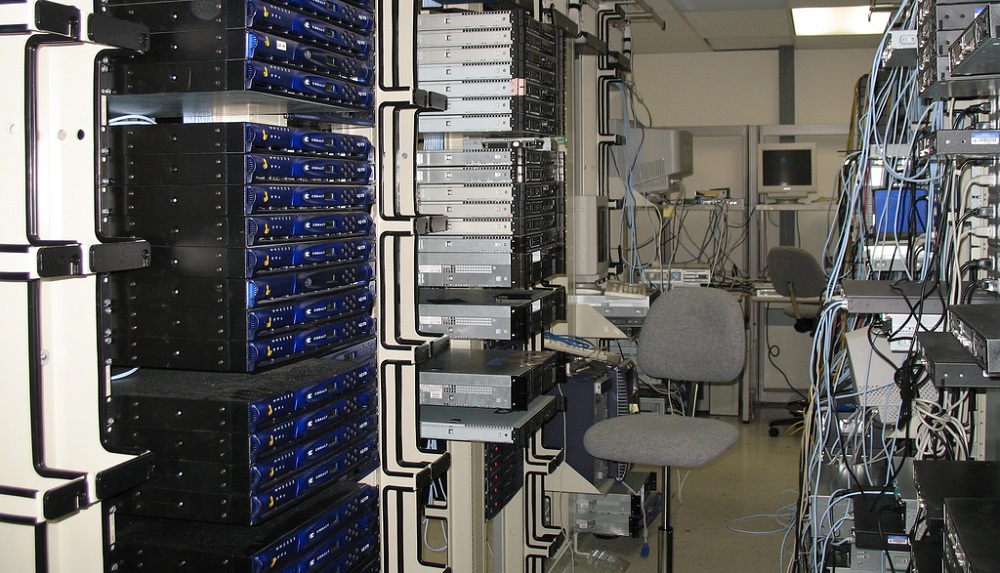HTML5 client for VMware vSphere coming out this fall - what you need to know
At the VMworld 2018 conference in August, VMware announced that the vSphere North virtualization platform will finally receive a full-featured HTML5 client.
The release, which has been expected since March 2016, is scheduled for October. Let's talk about the possibilities of new items.

/ photo libreshot PD
In May 2016, VMware decided to take a course on developing browser-based thin clients. Then representatives of the company announced the termination of support for a C # client for the vSphere (which was a fat client). Instead, they offered users the Host Client system and the vSphere Web Client. The first allowed to manage individual ESXi servers through a web interface, and the second - to work with the virtualization infrastructure through vCenter.
The Web Client was based on Flash technology. However, shortly after the release of the Flash client, users began to complain that it was seriously “slowing down”. It got to the point that the administrators of some companies “rolled back” and postponed updates in order to retain the opportunity to work with a C # client.
The company VMware took note of the claims of users and began to develop a new client for vSphere, already based on HTML5.
At first, VMware suggested that administrators use the HTMLS client vSphere Client Fling , which was created specifically for vSphere 6.5. We have already described the vSphere Client Fling v3.0 solution in one of our materials. One of its key features was the VM deployment function from a template in the Content Library and an OVF template.
But Client Fling was a kind of intermediate solution. And this fall, it will be replaced by a full-featured HTML5 client. It will be available for vSphere version 6.7.
In fairness, we note that the work on Fling did not stop. Now for users there is a version of vSphere Client Fling v3.41, in which developers have added PowerCLI automation. In this update for Fling'a promise to release every week.

/ photo by Richard Masoner CC
In order to improve performance , nine plug-ins are available for the vSphere 6.7 HTML5 client . Among them, there is a plugin for Virtual SAN — software-defined storage and a plugin for vSphere Integrated Containers — a technology that helps manage Docker virtual containers on vSphere.
However, some users believe that this number of plug-ins is not enough for normal operation and in some cases will have to use the functionality of the old web client. For example, in the HTML5 version there will be no plug-in for vRealize Orchestrator - data center and cloud management systems.
In response, VMware promised Gradually add all plug-ins supported by the previous client to future versions of vSphere, as well as improve and enhance the capabilities of the HTML5 client based on the wishes of users.
PS Additional reading in our blog about IaaS:
PPS Related articles from our blog on Habré:
The release, which has been expected since March 2016, is scheduled for October. Let's talk about the possibilities of new items.

/ photo libreshot PD
A bit of background
In May 2016, VMware decided to take a course on developing browser-based thin clients. Then representatives of the company announced the termination of support for a C # client for the vSphere (which was a fat client). Instead, they offered users the Host Client system and the vSphere Web Client. The first allowed to manage individual ESXi servers through a web interface, and the second - to work with the virtualization infrastructure through vCenter.
The Web Client was based on Flash technology. However, shortly after the release of the Flash client, users began to complain that it was seriously “slowing down”. It got to the point that the administrators of some companies “rolled back” and postponed updates in order to retain the opportunity to work with a C # client.
The company VMware took note of the claims of users and began to develop a new client for vSphere, already based on HTML5.
At first, VMware suggested that administrators use the HTMLS client vSphere Client Fling , which was created specifically for vSphere 6.5. We have already described the vSphere Client Fling v3.0 solution in one of our materials. One of its key features was the VM deployment function from a template in the Content Library and an OVF template.
But Client Fling was a kind of intermediate solution. And this fall, it will be replaced by a full-featured HTML5 client. It will be available for vSphere version 6.7.
In fairness, we note that the work on Fling did not stop. Now for users there is a version of vSphere Client Fling v3.41, in which developers have added PowerCLI automation. In this update for Fling'a promise to release every week.
Why HTML5
Security (compared to Flash)
- WhiteHat Security estimates that Adobe accounts for 14% of all web application vulnerabilities. One of them was found at the beginning of this week - speech about CVE-2018-15967 . There are few details about it (for example, it is known that attackers can gain access to user data with its help), but Adobe has noted the level of its importance as “important”. The developers have already rolled out a patch for it, simultaneously releasing five more patches .
- HTML5 is an open solution (not proprietary, like Flash) and is being developed with the support of companies like Facebook, Google and PayPal. Therefore, it is considered that the security situation in HTML5 is better. In this case, all updates for HTML5 are installed along with updates for browsers (they do not need to be installed separately, as is the case with Flash).
HTML5 less load devices
- According to the test results , devices working with HTML5 consume 17% less energy than in the case of Flash. This allows you to significantly save battery mobile gadgets.
Browser Compatibility
- A number of users of the vSphere Flash client have faced browser compatibility issues. For example, the system administrator of the Greenbrier Companies Transport Corporation said that he had to operate seven different desktop clients, and he had to use different browsers to work with them.
All these features affect the level of popularity of both technologies. According to Statista, in 2011, Flash used half of the websites, and in 2016 - only 10%. At the same time, according to data for this year , 73% of all sites use HTML5. At the same time, Adobe generally stops supporting Flash by 2020 - this is another reason why VMware focused on developing an HTML5-based client.
What's new
Admin tools
- The HTML5 version added a feedback tool that allows system administrators to take screenshots in the system and send them directly to the technical support service.
- Also, developers have improved the utility for updating vSphere Update Manager clusters . The new version of the manager "taught" to automatically update the ESXi-hosts. A number of hot keys was also added (including Alt + F4, the lack of which in the Flash client caused some users to be dissatisfied ).
Improved usability
- Host information can now be monitored at the cluster level using a separate repository status page. You can also use all the "features" of the browser: bookmarks, navigation, zoom.

/ photo by Richard Masoner CC
There are plugins
In order to improve performance , nine plug-ins are available for the vSphere 6.7 HTML5 client . Among them, there is a plugin for Virtual SAN — software-defined storage and a plugin for vSphere Integrated Containers — a technology that helps manage Docker virtual containers on vSphere.
However, some users believe that this number of plug-ins is not enough for normal operation and in some cases will have to use the functionality of the old web client. For example, in the HTML5 version there will be no plug-in for vRealize Orchestrator - data center and cloud management systems.
In response, VMware promised Gradually add all plug-ins supported by the previous client to future versions of vSphere, as well as improve and enhance the capabilities of the HTML5 client based on the wishes of users.
PS Additional reading in our blog about IaaS:
- New functionality in VMware vSphere 6.7 - an overview of new features
- Organizing the blockchain on VMware vSphere: from theory to practice
- VMware vMotion Evolution: yesterday, today, tomorrow
PPS Related articles from our blog on Habré:
